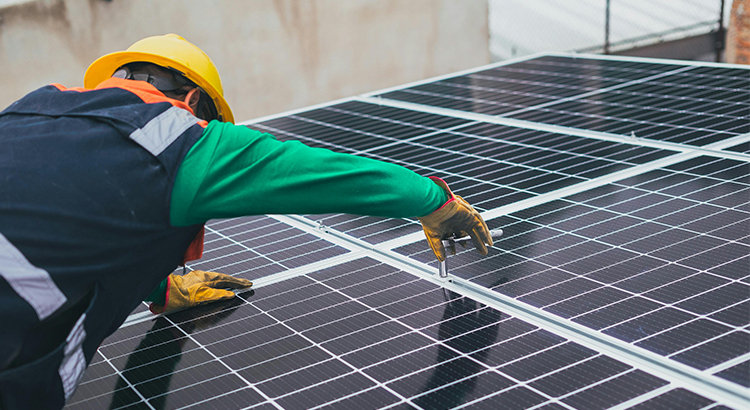Exploring the Different Types of Solar Power Systems

As the world looks for sustainable and renewable energy solutions, solar power is emerging as a major player in the shift to a greener future. Solar power is becoming more and more popular around the world due to its many advantages, which include lower carbon emissions, less of an influence on the environment, and financial benefits.
Understanding the different types of solar power systems is crucial for individuals and businesses looking to utilize solar energy efficiently. Here, we examine four different types of solar power systems and their unique characteristics.
4 Different Types of Solar Power Systems
1. Portable Solar Power System
Portable solar power systems cater to individuals who require on-the-go energy solutions. These systems are lightweight, compact, and easily transportable, making them ideal for outdoor activities, camping trips, or emergencies. Typically ranging from 3W to 120W in capacity, portable solar kits can power small electronic devices, such as smartphones, laptops, or camping lights.
They harness solar energy through portable solar panels, converting sunlight into electricity to charge batteries or directly power devices. These systems offer convenience and independence, allowing users to access renewable energy wherever they go.
2. On-grid Solar Power System
Integrated into the current electrical grid architecture, on-grid solar power systems are also referred to as grid-connected or grid-tied systems. Around 95% of solar installations in various areas are of this type, which is most common in urban and suburban environments. On-grid systems don’t need energy storage batteries, in contrast to off-grid systems.
With net metering arrangements, excess electricity produced by the solar panels is fed back into the grid, which frequently results in credits or financial incentives for the system owner. On-grid systems guarantee a consistent power supply while allowing homeowners to augment the renewable energy capacity of the grid. Skilled solar installers can help you set up on-grid solar systems.
3. Off-grid Solar Power System
These systems function independently from the utility grid, which makes them appropriate for remote or isolated locations where access to electricity is limited or unavailable. Batteries, inverters, charge controllers, and solar panels make up these stand-alone systems. Sunlight is captured by solar panels, which then transform it into electricity that is stored in batteries for later use.
Charge controllers control the electricity flow to avoid overcharging or battery damage. Batteries’ DC power is converted by inverters into AC power for home appliances. Off-grid solar systems offer energy autonomy and resilience, ensuring uninterrupted power supply even during grid outages. However, their upfront costs are usually higher than those of on-grid systems, and they need careful control of battery storage and sizing.
4. Hybrid Solar Power System
Hybrid solar power systems combine the benefits of both on-grid and off-grid setups, providing versatility and dependability. These systems integrate energy storage capabilities while remaining tethered to the grid, often incorporating additional renewable sources like wind turbines or backup generators.
By diversifying energy inputs, hybrid systems mitigate issues such as solar intermittency and battery degradation. They optimize energy usage by leveraging grid power during low solar output and supplementing it with stored or alternative energy during high-demand periods, ensuring a reliable and sustainable energy solution for residential and commercial use.
Conclusion of The Types of Solar Power Systems
The wide range of solar power systems accommodates different energy requirements preferences, and geographical locations. Whether seeking portability, grid integration, off-grid independence, or hybrid functionality, there is a solar solution available to meet every requirement. As technology advances and renewable energy adoption accelerates, solar power is revolutionizing our electricity generation, distribution, and consumption practices and opening the door to a more sustainable and clean future.
